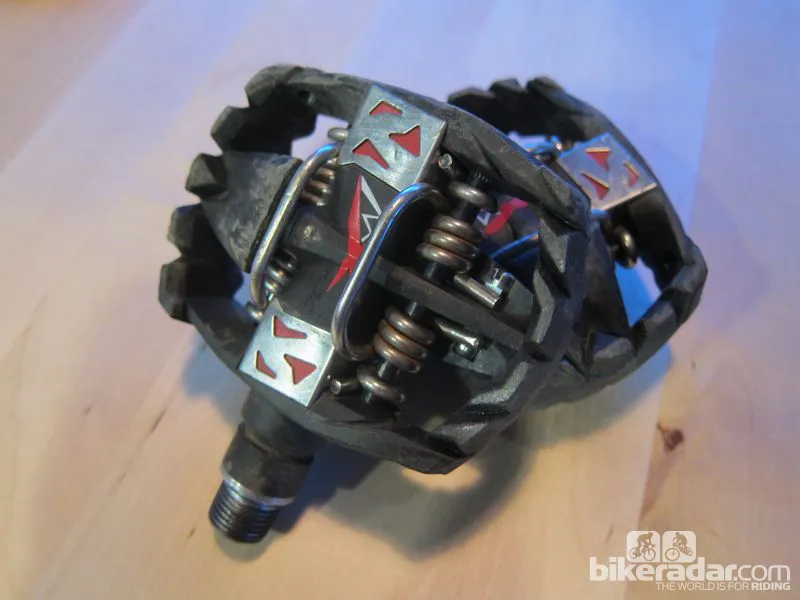Time’s new MX6 is essentially an ATAC pedal with a composite cage for added foot stability.
If you’re not familiar with the ATACs, their Bio Performance engagement system is designed to allow 5 degrees of angular freedom in either direction, as well as lateral movement of 2.5mm from center. Time cleats are also asymmetrical, to offer 13 or 17 degrees of release on each foot.
The ATAC system and its two large engagement springs make for easy engagement, even when the cleat and surrounding area is covered in mud. Our UK testers found that the connection felt secure but not overly restrictive when clipped in, and that clipping out required a bit more effort was easy to get used to.
However, our US expert found that any change in foot angulation happened against resistance that increased slightly in proportion to foot angle. In addition, he found the release angle unpredictable, regardless of how the cleats were set up. For instance, in the 13-degree setting he was occasionally unable to release without rotating our foot more than 13 degrees. For the 17-degree option the pedals were flat-out hazardous, as he was often unable to unclip when he needed to.

An uncomfy angle of release was a problem for our US tester
As an added hazard in both settings, releasing was thwarted by the shoe’s toe box hitting the crank arm and not allowing a big enough angle for escape, locking him in until he rotated the crank.
As far as the claimed 5mm of lateral float in the ATAC MX6, it wasn’t noticeable. Unfortunately, unlike SPDs, Time’s cleats don’t offer any lateral adjustment on the shoe itself, either.
Our foot alignment was about as close to center as it gets, and there was an obvious variation in distance from shoe to crank between the left and right sides. Our shoe’s cleat position measured up perfectly symmetrically on left and right, which left the discrepancy down to the pedals. Yet the Time system doesn’t allow lateral cleat adjustment to compensate.

The toe box would sometimes hit the crank arm and prevent us reaching a release angle
Beyond the release and float issues the pedal does ride nicely, and is relatively easy to clip into, though engagement isn’t quite as positive or consistent as with a Shimano Trail pedal.
The new composite cage does offer added stability, and has proven tough, holding up well during several direct rock hits. It’s also reasonably grippy even when you’re unclipped.
At 443g and a decent price, the MX6s are worth considering if you want more aggressive trail-style pedals.




